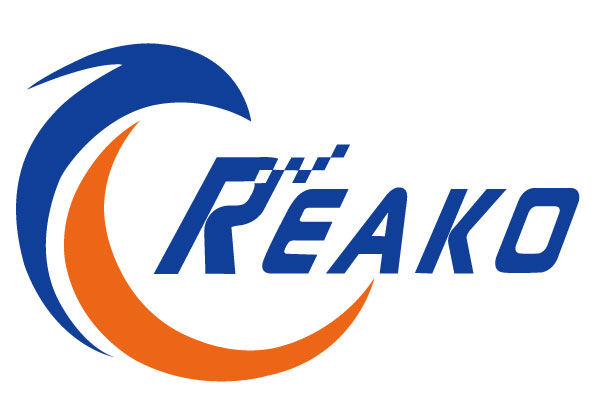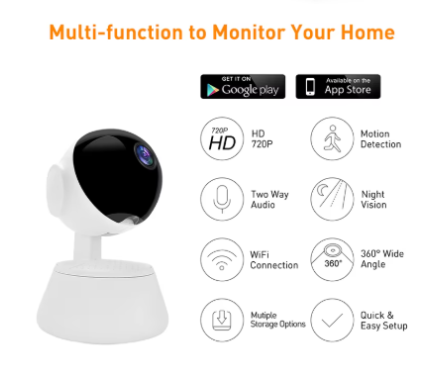What Are 4G Cameras?
Definition and Core Functionality
4G cameras are advanced surveillance tools that make use of 4G LTE technology for easy and wireless connection, so as to stream high-quality videos through mobile networks. These cameras incorporate special functionalities like Motion detection, Night vision and Remote internet viewing capabilities enabling you to view live videos from anywhere in the world. Compared with traditional cameras, which require Wi-Fi or wired connections, 4G cameras can works without network, it is applicable to sites with no network cable and network at, and other temporary site. This feature is particularly useful where cabling is difficult or not feasible.
Common Use Cases in Security and Surveillance
4G cameras are used in many security and surveillance fields since they are of strength. They are commonly used for public safety, traffic monitoring, and crowd control. In addition, businesses are using 4G cameras to drive operations, prevent theft and protect employee safety in places where no infrastructure yet exists. In remote regions, such cams are priceless, their capability to record and monitor in the likes of farms, remote facilities or job sites where internet access is limited or non-existent is invaluable. Such flexibility allows for full coverage of previously unreachable areas strengthening your security better.
Core Technology Behind 4G Camera Systems
4G LTE Connectivity and Cellular Networks
4G LTE data connection is a breakthrough for camera technology resulting in higher data transfer speeds that supports high quality video streaming. Capable of providing high definition video without the use of traditional cables, these cameras are flexible, and can be had virtually anywhere. These systems are large due to many subscribers and network operators providing good service and wide coverage for such cellular networks. Which makes them perfect for all kinds of surveillance uses where high quality video is necessary.
Power Sources: Batteries vs. Solar Options
The 4G camera power supplies are very important for the working efficiency and the durability of the equipment. The conventional battery power provides mobility but requires periodical maintenance and replacement, which is not suitable for remote monitoring applications. Alternatively, solar powered models have become more popular due to their reductions in cost and environmental harm. These solar answers are most beneficial for the underserved locations with no power. Furthermore, they can also be fitted with backup systems so that can function regularly and ensure monitoring to be uninterrupted.
Data Transmission and Encryption Protocols
With 4G camera systems encrypting your footage is a must. The company said these IP cameras utilize advanced encryption techniques such as AES for securely transmitting data, and user privacy and data security are protected. In addition, the compression algorithms help reducing network traffic without compromising video quality—especially for shared or congested networks. For companies that deal with PII and other sensitive information, it is critical they learn and implement these protocols, in order to satisfy regulatory requirements and secure their security systems.
How 4G Cameras Transmit and Store Data
Real-Time Video Streaming Workflow
4G cameras deliver video streaming in a constantly fashion over secure cellular networks and users can view the footage through mobile apps or web browsers. This process encompasses receiving video, transcoding it, quickly sending it via LTE networks to specific storage facilities in a matter of seconds. This immediate availability promotes "to-the-minute" judgments, which are of great importance in situations such as law enforcement or emergencies where prompt action can prevent catastrophic eventualities.
Local vs. Cloud Storage Solutions
Choosing local storage vs cloud storage for 4G cameras has a number of consideration points. Local storage (usually SD cards on the camera), is the easiest way to access footage but leaves your recordings in danger if someone rips off your camera. On the other hand, cloud storage provides better security and can be accessed remotely, so users can check the footage from any device, without worrying about doing backups since they will be made automatically. When comparing among these solutions, user needs, data security needs, and scalability concerns should all be considered.
Benefits of 4G-Powered Surveillance
Wireless Flexibility for Remote Locations
The wireless 4G cameras have the edge of being the most versatile, particularly for areas that are out of reach. With no need for a cabling infrastructure, installers can deploy these cameras in mobile applications or at temporary sites without the hassle of cable installation. This flexibility is key as the requirement for mobile solutions increases, granting users the ability to easily add to their surveillance platform.
Reliability in Areas Without Wi-Fi
4G cameras offer a strong solution when stable Wi-Fi isn't an option, think rural or industrial areas. Because they operate on cellular, these cameras deliver the reliable performance, and peace of mind you’ve come to expect from TrueLook, even in the toughest environments. This robustness greatly improves security measures, especially in areas that lack adequate surveillance.
Easy Installation and Scalability
It's simple to fit and install and you generally require only basic tools, so you'll save on installation fees and time. Scalability is also a great advantage, as users can simply add as many cameras as required as and when they are needed – without the need to replace existing optics. As a result, 4G cameras are a budget-conscious, scalable solution that is ideal for small and large businesses alike.
Managing Data Consumption Effectively
Factors Impacting Monthly Data Usage
Optimise the 4G connection of your cameras The demand for data when managing 4G cameras effectively consists of different major elements. First, the quality of the stream, i.e., HD vs. SD, has an enormous impact on monthly data. Better quality videos need more data hence consumption. Secondly, the situation with regards to the cameras deployed, as multiple cameras will equate to more data usage, and therefore more data flow. More importantly, how often motion detection triggers and user-set recording schedules are is also a factor. For example, receiving excessive motion detection notifications would result in more recordings and more data usage. Knowings those factors can help users to choose the right data plan that will help to avoid overage surprises and help keep your costs in check.
Optimizing Settings for Lower Bandwidth
4G cameras users are able to reduce the bandwidth that the cameras use for monitoring and have great video coverage. The video resolution and the number of frames recorded per second can be adjusted as simply as a way to reduce the amount of the data recorded (by, for example, decreasing the resolution of the video data). And if that’s not enough, this product has schedule-recording capability – only recording video during pre-set times – saving your bandwidth when you don’t need to be monitoring. In addition, motion detection capabilities help save storage space by recording only when movement is detected. This smart application saves not only data usage from caching but also space by loading videos so you can view them offline as well. Having increased the effectiveness of these mechanisms, users can maintain their surveillance efficiency and yet manage their bandwidth wisely.
FAQ Section
What are 4G cameras?
4G cameras are surveillance devices that utilize 4G LTE technology for video streaming and connectivity, providing remote monitoring capabilities without relying on Wi-Fi or wired infrastructure.
How do 4G cameras benefit remote areas?
They offer wireless flexibility, making surveillance possible in areas with limited or no Wi-Fi, such as rural or industrial zones, ensuring consistent performance through cellular networks.
What storage options are available for 4G cameras?
4G cameras can use local storage, like SD cards, or cloud storage, offering secure access and automatic backups. Users should choose based on security needs and scalability.
How can data consumption be optimized with 4G cameras?
Using lower video resolutions, schedule-based recording, and motion detection can help conserve bandwidth and manage data consumption efficiently.


